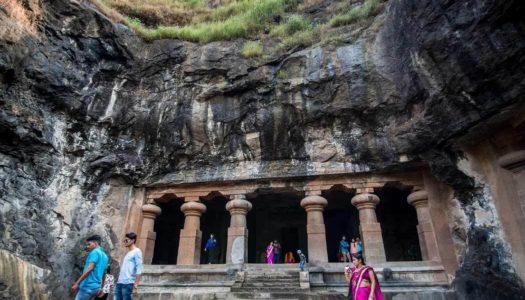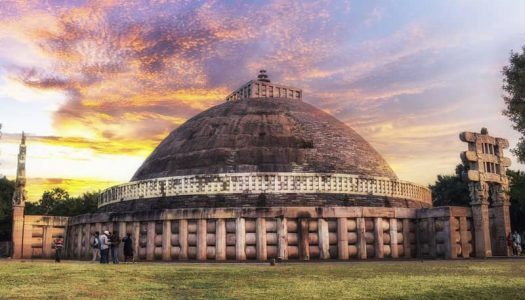Bhimbetka caves are present about 45 kms from Bhopal city, Madhya Pradesh and are wonderful natural treasures that tell us a lot about our ancient heritage. You walk into the vicinity and these caves are distinctly visible even from a distance because of them being about 100 metres above the Deccan plain. They are spread across an area of 1892 hectares in Raisen district and the caves are managed by the Archeological Survey of India.
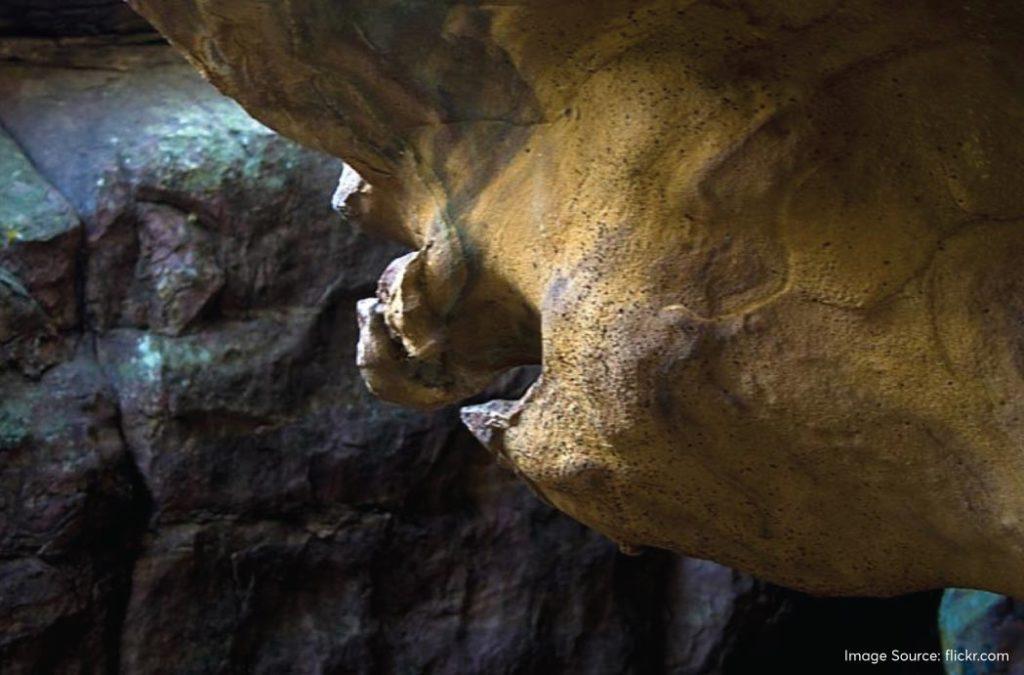
Here’s everything you need to know about the Bhimbetka caves, its history, legend associated with the Mahabharata, interesting rock paintings and more.
Read on!
History of the Bhimbetka Caves
W. Kinvaid was a British person who first mentioned the Bhimbetka caves in his scholarly paper dated to the year 1988. He interacted with the local Adivasis about the Bhojpuri Lake and mentioned the nearby Bhimbetka Caves as a significant Hindu religious site. V.S Wakankar was the first archaeologist to visit the rock formations and concluded that they were very similar to the cave formations that he found in France and Spain. He then brought more archaeologists and reported that these shelters were from the prehistoric era. He submitted his findings in 1957.
He reported that the place was a significant site for Hindus. The word ‘Bhimbetka’ can be broken into ‘Bhim’ the second of the Pandavas of the Mahabharata and ‘Betka or Baithak’ which means ‘resting place’. According to the legend, during their 13-year exile, the Pandavas wandered through many forests and secluded regions.
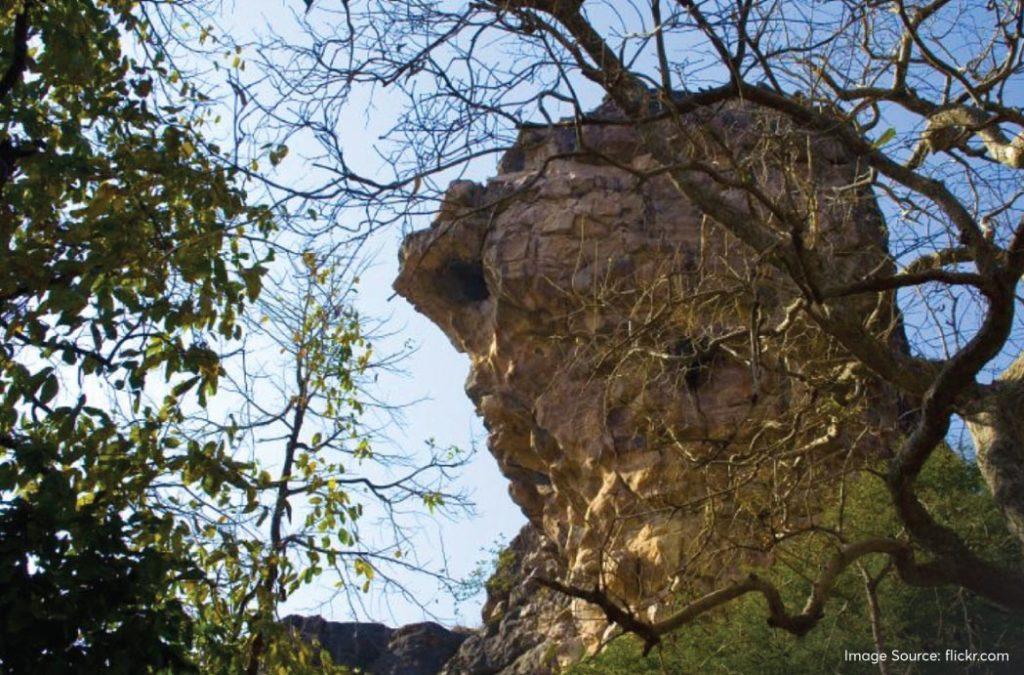
The Bhimbetka caves were among the places where they rested and took shelter. More significantly, Bhim, owing to his giant body, often slept and rested in the caves. That is how the place gets its name. Bhimbetka caves also served as the secure hideout for the five brothers, while they eluded their enemies. They used the rock shelters for cooking, sleeping and also discussing confidential strategic discussions.
The caves of Meghalaya are architectural marvels that will amaze you with their sheer magnificence. You should definitely reach the abode of clouds to explore them after you are done exploring the Bhimbetka caves.
Archaeological significance of the caves
Bhimbetka Rock Shelters gives us the earliest account of human civilisation in the Indian subcontinent. There are evidences that tell us about life during the Paleolithic era, which is about 1,00,000 years ago. It tells us about early human evolution and also how people migrated from place to place in search of better living conditions. The artistic display on the walls of the caves is proof that human creativity existed even during those times.
Archaeologists found small tools called microliths here. There were fossiled bones of animals like deer, bison and elephants which explain a lot about the diet of the ancient inhabitants of the place. Pottery fragments made of shells, beads and bones were also unearthed. These things indicate the craft and trade between the people who lived in the caves. Archaeologists also found burial sites with human skeletons and understood the burial practices of those times.
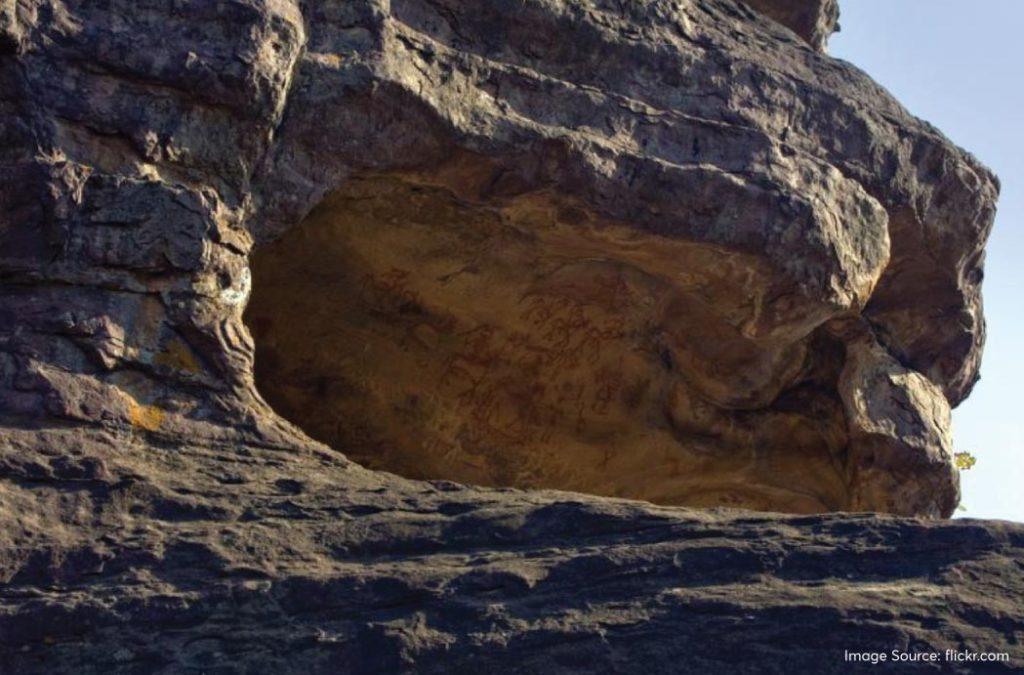
The paintings inside the caves depicted everyday life like hunting, dancing and even communal activities. There are pictures of war and victory too. The abstract motifs are made using natural pigments extracted from minerals and plants, most of them being in red and white colour. Some caves also had levelled floors and carved steps. These show that people then knew how to make architectural modifications to accommodate life.
Bhimbetka caves are also compared with other caves around the world like the Lascaux caves in France and Altamira caves in Spain. Archaeologists highlight the fact that this resembles a shared heritage of rock art across different countries. It is surprising that the people of the Paleolithic era were aware of cultural interactions and even social organisation.
Bhimbetka rock art and paintings
Out of the 750 caves in the Bhimbetka portion of the hills, 400 of them have clear rock art and paintings that depict the life, habits and beliefs of the inhabitants during the pre-, medieval and post-stone age periods.
Here are some of the Bhimbetka cave paintings you will come across on the walls.
Hunting scenes
The art shows how the residents of the bygone era used to hunt animals like boar, deer and bison with weapons that they made using the resources available in the wilderness. Some go as far as to show us the technique in which it was done so that the animals succumbed to the element of surprise and did not turn back to attack.
Animal art
The animal art showed the different mammals, birds and other species that existed during the Stone Age. This included bison with robust bodies, the rhinoceroses and the bears which are bigger than the ones that exist now. You also see depictions where animals are walking on twos and not fours.
Human figurines
The paintings from the medieval Stone Age period show humans going about their activities like hunting, eating, gatherings and celebrations. Also, there are paintings that showed the early inclination towards agriculture.
Ritualistic scenes and symbols
The paintings where humans were present in a group, often dancing and moving together, tell a lot about the complex social structure that probably existed even then. The art includes certain symbols and patterns that might hold ritualistic significance and symbols from Hindu mythology are also clearly painted. This says that early humans were active in their religious and spiritual activities.
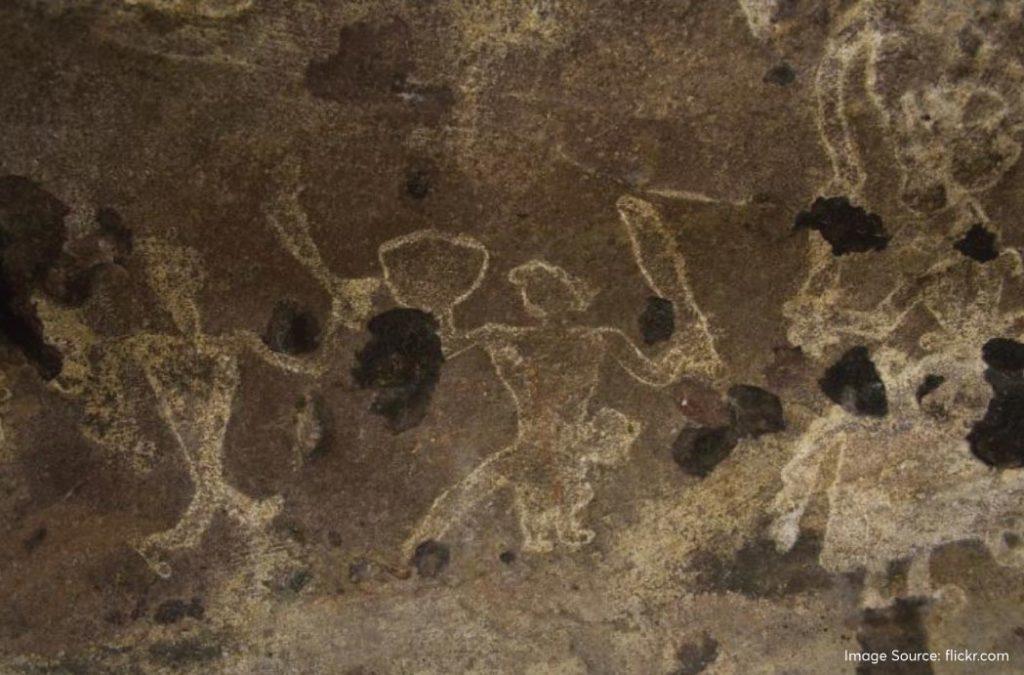
Mythological depictions
There are depictions on the walls that resemble the scenes from the Hindu Mythological tales like the Mahabharata. There’s a representation of war, horses, elephants marching and even sky chariots and nature Gods.
Jewellery
The paintings also showed the jewellery that people wore during the Stone Age, things they used to make from shells, stones and animal bones. The mythological paintings also showed the jewellery that the men wore in the legends.
Geometric patterns
There are several geometric patterns drawn on the walls and floors of Bhimbetka caves. These include circles, squares, lines and patterns formed by interlinking lines. They also combined circles, squares and lines to form symbols that probably had some meaning then.
Red and white colours
Most of the paintings on the rocks had red and white colours. The people must have used the colour from the vegetables at some point. However, before that, apparently, they used the red ochre made from Hematite and the white colour was made from kaolin or limestone.
If you are visiting Bhopal and the Bhimbetka caves with your children, then you should also check out the water parks in Bhopal that are sure to make your little ones happy!
Auditorium Cave of Bhimbetka
The Auditorium Cave is the largest of all caves in Bhimbetka. It has a semi-circular entrance and once you are inside the space, you will see that it is very wide and spacious like any other auditorium you will find in the contemporary world. It has an amphitheatre-like environment with large rock structures flanking on both sides. If you go inside this space and say something, the sound will echo and resonate. You will also find the famous Bhimbetka rock paintings inside!
Entry details
The Bhimbetka caves are open from sunrise to sunset. You can visit them from 7:00 AM to 6:00 PM. The ticket counter is about 2 kms away from the entrance of the caves so you must plan your travel accordingly. The entry fee is INR 25 for Indians and INR 500 for foreigners. There is an additional cost for vehicle parking. For two-wheelers, you will have to pay INR 100 and for four-wheelers, it is INR 300.
Best time to visit Bhimbetka Caves
The Bhimbetka caves remain open throughout the year and you can visit here anytime.
People usually visit the place during October to March which is also the festive season. Bhopal has the Bandhra Bandh Ghat fair during October and also Sanchi Mahotsav in Raisen during December. Dussehra and Diwali also fall during these months. Bhopal Utsav Mela happens in the month of December. You can coincide your trip with any of these special occasions. The weather is usually pleasant during these months and also ideal for outdoor sightseeing.
Visiting Bhimbetka caves during the monsoon months can be relatively challenging. The region receives heavy rainfall during the peak monsoon months like July and August. The hilly terrain becomes slippery and the green vegetation also grows vibrantly, covering the paintings and entrances to the caves.
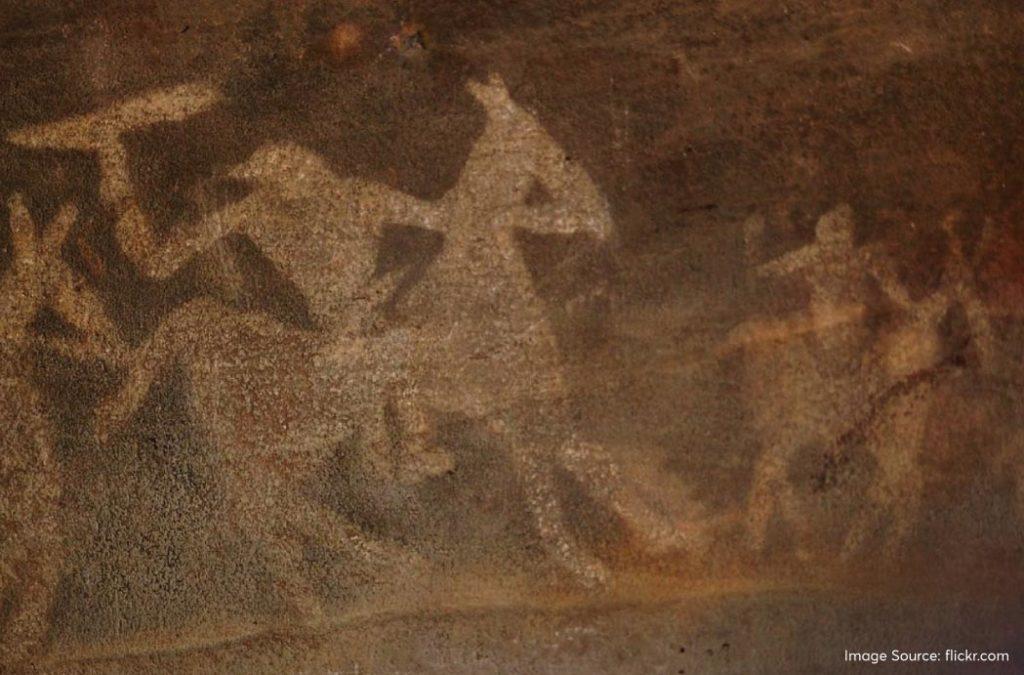
If you do not like the crowd, you can visit the Bhimbetka caves during April to June. This is when people come here in lesser numbers, owing to the higher temperature during the Summer season. If you don’t mind the heat, you can explore the caves in leisure.
After you are done visiting the Bhimbetka caves, it is only natural that you will be very hungry because of the physical exhaustion. There are several good family restaurants in Bhopal that will entertain your taste buds.
How to reach Bhimbetka Caves?
By Air
The nearest airport to Bhimbetka caves is the Bhopal Airport which is roughly 50 kms away from the cave. However, this is a domestic airport. Alternatively, you can also deboard at the Devi Ahilyabai Holkar International Airport in Indore which is 190 kms away from Bhimbetka caves. Both the airports are well connected with other Indian cities.
By Rail
The nearest railway station is the Bhopal Junction. It receives trains from New Delhi, Agra, Lucknow, Mumbai, Ahmedabad, Jaipur, Kolkata, Patna, Bhubaneshwar, Chennai, Hyderabad, Bengaluru, Indore and Nagpur. From the railway junction, the Bhimbetka caves are about 45 kms away.
By Road
If you are on a road trip, you must reach Bhopal first. From Bhopal, set out on National Highway 46 which takes you through Hoshangabad. The total distance is about 45 kms and after 40 kms from Bhopal, you will see signage asking you to take a turn toward the Bhimbetka caves.
Bhimbetka caves are fascinating not only for their well-thought structural modifications but also because they preserve the traces of our past. Archaeologists still continue to study the place to see its co-relation with several other rock shelters in the world. It tells us a lot about the heritage and habits of the inhabitants from the stone age, their lifestyle and also depicts their creativity and skills. It is a surreal experience to visit the place.









